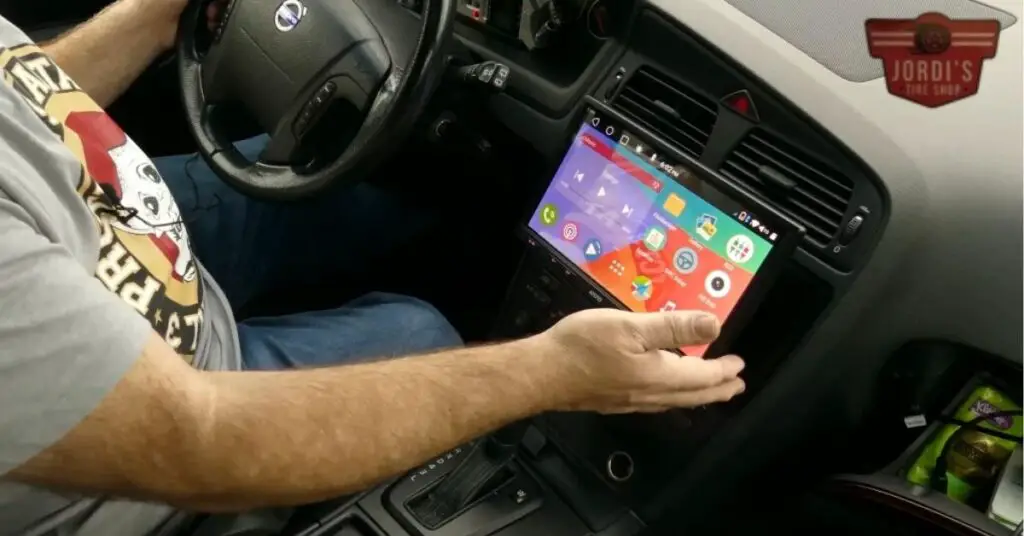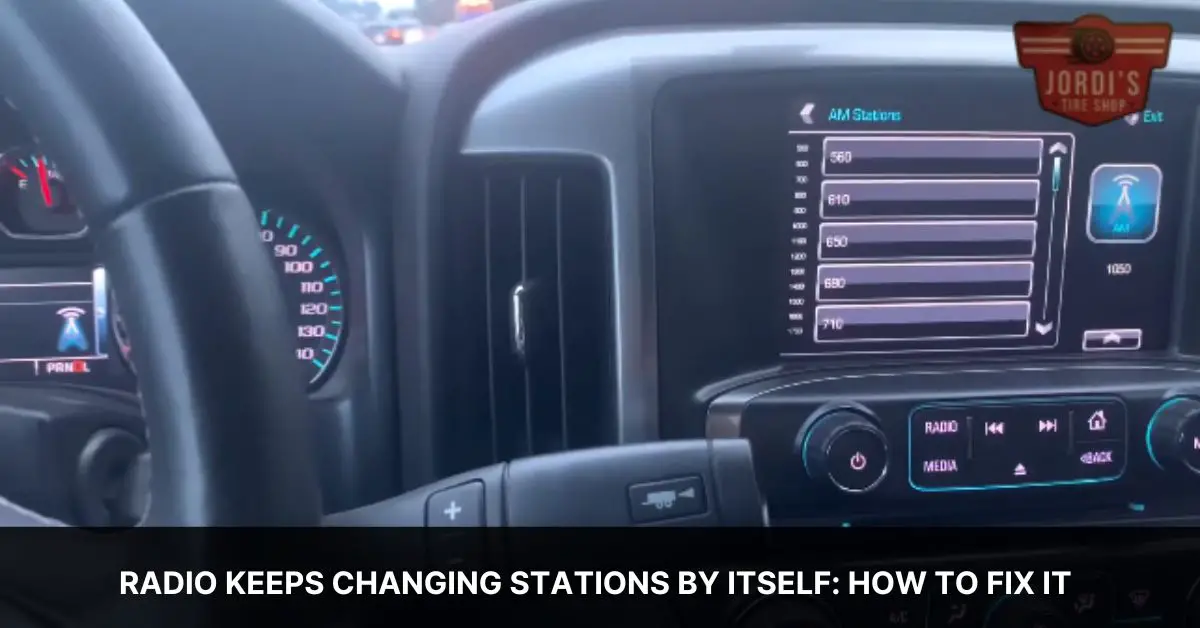Have you ever settled into a cozy spot, ready to relax with your favorite radio station, only to find the station changing all by itself? It’s a puzzling situation that’s more common than you might think. We’ve all been there at some point, scratching our heads and wondering if our radio has developed a mind of its own.
This odd phenomenon can turn a moment of leisure into a frustrating battle with technology. But before you consider your radio possessed or throw it out the window, let’s dive into some possible explanations. Understanding why this happens might not only save your radio but also bring back the harmony to your listening experience. Join us as we explore the curious case of radios changing stations by themselves, and how we can tune back into our audio comfort zone without unexpected interruptions.
Understanding the Phenomenon: Radio Keeps Changing Stations by Itself

Navigating through the world of radio malfunctions, we’ve arrived at a point where understanding the why’s and how’s becomes crucial. The phenomenon of radios changing stations autonomously might seem like a quirk of the past, but it’s a reality many still face. With our experience and research, we’ll dissect the key factors contributing to this puzzling occurrence, aiming to shed light on the underlying reasons and, hopefully, guide you toward a solution.
Interference and Signal Issues
First, consider the role of external interference. Electronic devices, power lines, and even atmospheric conditions can disrupt radio signals. When two stations operate closely on the spectrum or when a stronger signal overpowers the one you’re listening to, it can cause your radio to flip stations without input.
Faulty Equipment
Second, the problem might lie within the radio itself. Over time, internal components like the tuner or circuit board can wear out or become damaged, leading to unpredictable behavior. If your radio is older or has been exposed to moisture or extreme temperatures, this could very well be the culprit.
User Settings and Features
Lastly, we explore the possibility of overlooked features or settings. Some modern radios come equipped with auto-scan or seek functions intended to enhance user experience. However, if accidentally activated or set incorrectly, these features could cause your radio to change stations seemingly on its own.
Understanding these potential causes, we move closer to solving the mystery behind your radio’s wanderlust. Armed with this knowledge, you’re better equipped to troubleshoot the issue, restoring harmony to your listening experience.
Technical Insights into the Radio Station Changing Issue

Building on our understanding of why radios might change stations on their own, let’s dive deeper into the technical aspects of this problem. Our aim here is to arm ourselves with technical insights that can help us tackle this issue more effectively.
Interference and Its Sources
One common culprit behind radios changing stations unexpectedly is external interference. This can come from a variety of sources:
- Electromagnetic Interference (EMI): Common in urban areas, EMI can be caused by nearby electronic devices, power lines, or even thunderstorms.
- Frequency Overlap: Sometimes, two radio stations operate close to each other’s frequency, leading to one station overpowering another.
- Signal Reflections: In certain environments, signals can bounce off structures, causing multiple signals to reach the radio, confusing it.
Internal Malfunctions and Fixes
Internal issues within the radio itself can also cause spontaneous changes in stations:
- Faulty Circuitry: Wear and tear over time can lead to shorts or loose connections in the radio’s circuit board.
- Outdated Firmware: For digital radios, outdated firmware might not manage frequencies well, leading to random changes.
- Corrupted Presets: Sometimes, the presets saved in the radio get corrupted, causing the radio to jump between stations.
Addressing these internal problems usually requires a technical fix, such as repairing or replacing damaged components, updating the radio’s firmware, or resetting the radio to its factory settings.
User Settings Influence
Lastly, the way we set up and use our radios can influence station stability:
- Auto-Scan Feature: Many radios have an auto-scan feature that searches for stations with strong signals. If activated, it might switch stations automatically.
- Sensitivity Settings: High sensitivity settings can make the radio more prone to picking up interference, leading to station changes.
Understanding these technical nuances can tremendously help us diagnose why a radio might be changing stations by itself. By checking for external interferences, inspecting the radio for any internal malfunctions, and reviewing the configured user settings, we can take significant steps towards fixing this issue.
Troubleshooting and Solutions
Having explored the underlying reasons radios might change stations by themselves, we’ll now dive into troubleshooting and solutions. Our goal here is to equip you with practical steps to diagnose and fix this peculiar issue effectively.
Identifying the Cause
First, examining the nature of the problem helps narrow down potential solutions. If the issue is linked to external interference or signal issues, you’ll notice it happening in specific locations or with certain stations. Conversely, if it’s an internal problem, like faulty circuitry, the issue will be more consistent regardless of location or station.
Solutions for External Interference
- Relocate the Radio: Moving your radio to a different spot can reduce interference from external sources such as household appliances or nearby electronic devices.
- Use Antennas: Enhancing the radio’s ability to receive signals with an external antenna can significantly improve station stability.
- Adjust the Frequency: Sometimes, manually adjusting the frequency slightly away from the exact station frequency can minimize interference.
Addressing Internal Malfunctions
- Reset the Radio: A simple reset can often resolve minor glitches within the radio’s system, restoring normal function.
- Update Firmware: If your radio has the option, check for firmware updates. Manufacturers may release software fixes for known issues.
- Contact Support: For persistent internal issues, contacting the manufacturer’s support team can provide model-specific advice and potentially necessary repairs.
- Disable Auto-Scan: Turning off any auto-scan or auto-seek feature can prevent your radio from changing stations unexpectedly.
- Adjust Sensitivity Settings: Some radios allow users to tweak sensitivity settings, reducing the chance of automatically switching channels due to minor signal fluctuations.
Methodically following these steps, we can address and rectify the problem of radios changing stations on their own. Remember, patience and a bit of experimentation with these solutions will often lead to success.
Preventive Measures to Avoid Future Issues

Building on our exploration of reasons and solutions for radios changing stations independently, let’s focus on preventive measures. These strategies aim to safeguard against external interference, internal malfunctions, and unintended user settings adjustments. Ensuring your radio remains on the chosen station requires a mix of precision, awareness, and sometimes a bit of technical know-how.
Regular Maintenance Checks
Conducting routine inspections can reveal early signs of wear and tear that might lead to bigger issues.
- Inspect Wiring and Connections: Loose or damaged wires can cause unexpected behavior, including the radio changing stations.
- Clean Interior Components: Dust accumulation leads to overheating, which may result in malfunctioning. Use compressed air to gently remove dirt from the radio’s interior.
Update Firmware Regularly
Manufacturers release updates that enhance performance and fix known bugs.
- Check Manufacturer’s Website: Look for the newest firmware versions and follow the provided installation procedures.
Use High-Quality Accessories
Choosing the right accessories, like antennas and power supplies, plays a crucial role.
- Invest in a Good Antenna: A quality antenna reduces the chances of frequency overlap and improves reception.
- Ensure Clean Power Supply: Fluctuations in power can disturb your radio’s operation. Using a surge protector might help mitigate this.
Customize Settings to Suit Your Environment
Adjusting your radio’s settings can significantly impact its performance.
- Disable Auto-Scan Features: Prevent the radio from automatically searching for stations.
- Adjust Sensitivity Settings: Lower the sensitivity to minimize the effect of external interference.
Adopting these preventive measures, we can mitigate future occurrences of radios changing stations by themselves. Regular maintenance, firmware updates, quality accessories, and tailored settings form a comprehensive approach. Not only do these steps promote a more stable listening experience, but they also prolong the life of your radio. Following these guidelines, you’ll enjoy uninterrupted access to your favorite stations, free from unexpected changes.
The Evolution of Radio Technology

Transitioning from troubleshooting and preventive measures for radios changing stations autonomously, it’s essential to understand the strides made in radio technology that influence today’s solutions. Over the years, radio technology has witnessed significant evolutions, impacting how we address and prevent technical issues.
Starting in the late 19th century, radio technology primarily served as a means for maritime communication, evolving quickly into a household staple for news, music, and entertainment throughout the 20th century. Initially, radio sets were large, vacuum tube-based devices requiring manual tuning to change stations.
By the 1950s and 1960s, transistor radios revolutionized the market, offering portable and more reliable devices. These advancements facilitated the next evolutionary leap in the 1980s and 1990s with the introduction of digital radios. Digital technology allowed for clearer audio quality, reduced interference, and the ability to encode signals, leading to digital audio broadcasting (DAB) in many parts of the world.
Today, Internet radio and software-defined radio (SDR) represent the latest advancements. Internet radio utilizes the web to deliver a global range of stations to listeners, bypassing traditional signal limitations. SDR, on the other hand, uses computer-processing power to demodulate radio signals, offering unparalleled tuning accuracy and stability.
These developments not only enhance our listening experience but also influence the solutions to radios changing stations by themselves. Modern radios, equipped with digital technology, are less prone to interference and malfunctions that plagued earlier models. Additionally, the shift towards internet and software-defined radios introduces new troubleshooting methods, focusing on internet connectivity and software updates rather than traditional radio signal issues.
Understanding the evolution of radio technology provides valuable context for diagnosing and addressing the phenomenon of radios autonomously changing stations. It showcases how advancements in technology have helped mitigate some of the issues associated with older models, guiding us towards more effective solutions.
Conclusion
We’ve journeyed through the curious case of radios changing stations by themselves, unpacking the mysteries behind this phenomenon. From external interference to internal malfunctions and the evolution of radio technology, we’ve covered the ground on why this happens and how to fix it. Armed with practical solutions and preventive measures, we’re better equipped to tackle any radio hiccups. Remember, whether it’s tweaking settings or updating software, there’s always a way to keep your tunes steady. Let’s embrace the advancements in radio technology, ensuring our listening experience remains uninterrupted. Happy tuning!
Related Posts:
- 2021 Mitsubishi Outlander Sport Towing Capacity: A Friendly Guide
- A Guide to the “A in a Circle” Symbol on Your Car
- Big O Tire Installation Fee: What You Need to Know
- Biggest Tires for 18 Inch Rims: A Comprehensive Guide
- Mechanic for European Cars: Expertise and Affordable Services
- Radio Keeps Changing Stations By Itself: How to Fix It
- Semi Truck Tire Position Diagram: A Helpful Guide for Drivers
- Mitsubishi Staten Island: Your Ultimate Guide to Finding the Best Dealership
- Ford 3.3 V6 Problems: Common Issues and Solutions
- 5.3 Lifter Replacement Made Easy Without Removing Head

